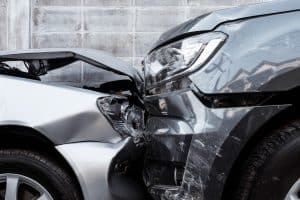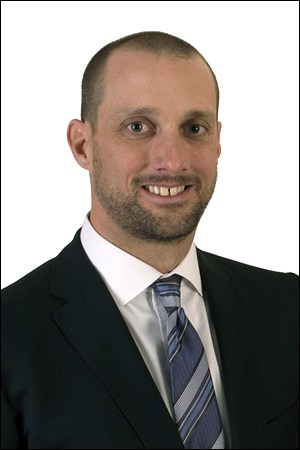Common Myths and Misconceptions About Car Accident Claims
 Car accidents happen every day. However, no two accidents are ever the same. Whether the crash was caused by road damage, distracted driving, impaired driving, or faulty vehicle parts, you deserve to be compensated for your injuries.
Car accidents happen every day. However, no two accidents are ever the same. Whether the crash was caused by road damage, distracted driving, impaired driving, or faulty vehicle parts, you deserve to be compensated for your injuries.
There are a lot of myths and misconceptions about car accident claims here in the Sooner State. Today, we will debunk those myths so you have a better understanding of what to expect when filing a car accident claim with the help of an Oklahoma City car accident attorney.
Myth #1: I have to file a police report for any crash no matter severity
Oklahoma only requires drivers to file a police report if the car accident caused more than $300 in damage or resulted in injuries or death. So, if the Oklahoma City car accident you were involved in did not lead to injuries, death, or more than $300 in damage, you do not have to report it, as long as all parties involved have the state-mandated liability coverage. Oklahoma requires drivers to carry 25/50/25 auto insurance coverage. This breaks down to $25,000 bodily injury protection per person, $50,000 per accident, and $25,000 of property damage coverage.
However, even if the crash does not meet these reporting minimums, it is still recommended that you file a police report. Doing so makes it easier to prove fault in the event you need to file an insurance claim.
Myth #2: Oklahoma is a no-fault state
Oklahoma is an at-fault state, which means that the person who caused the car accident can be held responsible for your injuries and vehicle damage. You can file a claim against their insurance company for compensation for medical expenses, ambulatory transportation, medical equipment, and repairs to your vehicle, and the money would come out of the state minimums mentioned in the previous section.
Should you need to file a claim with your own insurance company, you would only do so if the following applies:
- The other driver did not have coverage or a driver hit you and fled the scene (uninsured motorist coverage on your policy kicks in here)
- The other driver did not have enough insurance to cover all of your losses (underinsured motorist coverage on your policy kicks in here)
Myth #3: I can’t file a claim if I am partially at fault
Oklahoma follows the doctrine of modified comparative negligence. That means you can still seek compensation even if you were partially responsible for the crash. How much you can collect, however, depends on the amount of fault assigned to you in the crash. For example, if you are assigned 20% fault and the other driver is assigned 80% of the fault, you can still file a claim and recover compensation; your award will just be reduced by 20%.
One thing to know is that you can be barred from seeking compensation entirely if you are found equally at fault (50/50), or more at fault.
Myth #4: I can handle the aftermath of a car accident without the help of a lawyer
While many car accident victims decide to handle the aftermath of a car accident on their own, it is not recommended that you do the same. An experienced Oklahoma city car accident attorney helps relieve the stress you experience following a crash in a multitude of ways by helping you with the following:
- Review the evidence of the crash to determine fault
- Acquire the police report
- Hire an accident reconstructionist, if necessary
- Acquire your medical records
- Handle communication with the at-fault driver’s insurance company and lawyer
- Negotiate a settlement on your behalf
- Take your case to trial if a settlement cannot be reached
Myth #5: If I don’t feel injured immediately I cannot file a claim for compensation
One of the most common misconceptions in Oklahoma City regarding car accidents is that victims cannot file a claim for compensation if they do not feel injured immediately after the crash. Even the most “minor” of crashes can lead to injuries; however, the symptoms might not make themselves known for days or weeks after the crash. This is why it is always important to seek medical care immediately following a crash, even if you think it was minor in nature. At the very least, let the EMTs who respond to the scene evaluate you for potential signs of injuries. You can always refuse transport to the hospital and then go see your doctor at a later date.
It is important to note that you can still file a claim even if an injury is not present immediately after the crash. The claim will likely not be resolved quickly, so you have time for an injury to finally show itself.
Myth #6: Because Oklahoma is an at-fault state, I cannot file a third-party claim
If a third party was partly responsible for the crash that led to your injuries, you can file a claim. Third-party claims involve parties who were not at the scene of the crash, but played a role in what happened. Common parties involved in these types of claims include the following:
- Vehicle manufacturers
- Parts manufacturers
- Road construction crews
- Cities, towns, or municipalities (failure to replace broken lights, signs, or guardrails)
Myth #7: I have health insurance, so I don’t need to file a claim against the other driver
While health insurance will help pay for some of the medical costs associated with a car accident injury, you should still file a claim against the other driver’s insurance company. The money you can recover in a claim will help pay for lost wages, mental anguish, loss of enjoyment of life, the cost to hire in-home nursing care, and much more.
Were you or a loved one injured in a car crash? Do not let the common myths and misconceptions discussed today prevent you from filing a claim for compensation. Talk to the experienced Oklahoma City car accident attorneys at Cunningham & Mears about your case. Call our office or complete our contact form to schedule a free consultation with a member of our team today.

Ryan Y. Cunningham is a founding partner of Cunningham & Mears. Mr. Cunningham devotes his practice to protecting the rights of injured Oklahoma residents. In addition to assisting injured clients, Mr. Cunningham endeavors to improve personal injury representation by speaking on issues related to personal injury law to attorneys in continuing legal education courses and to law students. Learn More
